Bouncing back from relegation can be a daunting task for any club at any level for a multitude of reasons. In the past, we have seen so many clubs fail to recover from going down, and they found themselves either sat in their new division with little to offer in the way of progress or worse – they continued on a downward spiral, with some even suffering another relegation soon after.
Some clubs, however, show a great deal of grit and knowledge of the game by starting life in the lower division well. South Yorkshire club Barnsley match that description as the Tykes almost achieved an immediate return to the Championship last season, only to lose in the play-off final against Sheffield Wednesday. Still, finishing fourth in League One immediately after coming down from England’s second tier is an impressive feat, and it looks like they’ve brought that momentum into this campaign despite a change in manager.
Michael Duff, now manager of Championship club Swansea City, guided Barnsley to that play-off finish last season, and although he was only at Oakwell for one year, his success there laid down a foundation for the next manager to build upon. Of course, that next manager was the Tykes’ current boss, Neill Collins.
This tactical analysis will dive into why Barnsley are a strong promotion contender in League One as we look at Collins’ tactics and discuss the similarities and differences to Duff’s approach. The tactical analysis will also discuss the club’s transfer activity over the past year or so, as their recruitment has played a considerable role in Barnsley not slumping down to mid-table or below.
Transfer activity since the summer of 2022
As you may expect, a squad rebuild was afoot after the relegation of a big club like Barnsley. Over the course of the 22/23 season, 14 players were either sold or released, including the departure of striker Carlton Morris, who raised a reported £1.75m who went on to play an essential role in Luton Town’s promotion to the Premier League. Alongside the 14, six of the seven loanees, Barnsley brought in returned to their respective parent clubs. The remaining loanee, Max Watters, made his move permanent in time for this season. 10 permanent signings were made by the club through the course of last season, with, as mentioned, seven loanees – a busy summer for the club.
In preparation for the 23/24 season, the rebuild continued under the new management of Collins. A high player turnover is no rarity in the EFL, but Barnsley deserve credit for two significant factors – buying well and selling well. 11 signings, including four loan players, have arrived at Oakwell over the summer, with 10 players permanently leaving the club; of those 10, three brought the club just over £7.5m – a vast sum for a League One club. The summer capped off an excellent financial period for the club regarding transfers, as they only spent £550k of that on new signings.
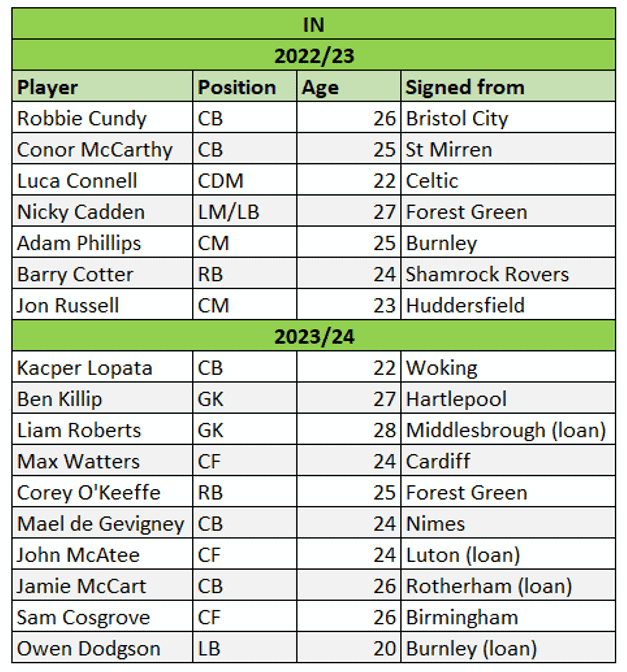
The table of players above is a visual representation of every player Barnsley have signed since the summer of 2022 who are still at the club today. As we mentioned, a high player turnover in League One can be common for clubs, especially when you throw a new manager into the mix, but the foundations laid by Michael Duff enabled Collins to retain seven of last season’s signings as well as adding a healthy amount of his own selected players.
The recruitment looks well structured, too, with the club targeting key positions to improve. This summer, they have drafted in five defenders and two goalkeepers, which tells you how much Collins wanted to bolster his defensive options. Three forwards also joined the club, and three good ones at that – Watters, who impressed enough during his loan spell to make the club chase a permanent deal; Sam Cosgrove, who has struggled in front of goal so far this season but brings a physical presence which is vital to Barnsley’s tactics; and finally, John McAtee, who joins on loan from Luton Town after playing two very strong campaigns for Grimsby Town. League One football is a step up for McAtee, but he is finding his feet more and more as the season goes on.
Collins also continued the trend of maintaining youth within the squad. Last season, the average age in the Barnsley squad was 25.5 years – currently at 24.7. Collins did not sign an outfield player aged 27+, which indicates a clear direction from the club.
How Collins built upon Duff’s tactical foundations
This season, Barnsley have won eight of their 16 league games, scoring 31 goals in the process – leaving them joint top scorers in the league at the time of writing. While strong recruitment certainly played a part in this promising start to the season, finding a manager who could build on what Michael Duff started to create instead of hiring a manager with an entirely different tactical philosophy also played an important role. Of course, there are differences in what Collins wants from his team, but he also set out to improve Barnsley’s performance in existing areas. Here, using data and match footage, we look at the tactics Collins has deployed in the early days of his Barnsley reign while looking at any similarities from Duff’s tactics last season.
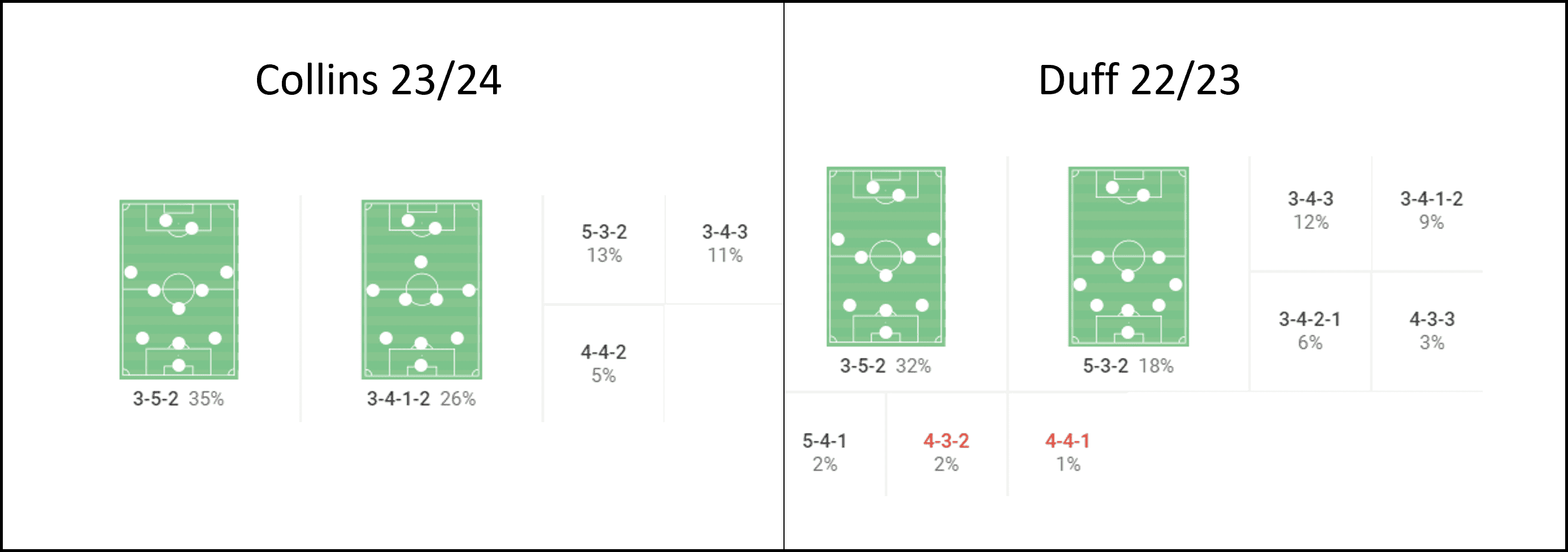
The formation was the first major tactical component that stayed after Duff’s departure. Both managers opted for a 3-5-2 most of the time, with an occasional use of 5-3-2 and 3-4-1-2 from time to time. Of course, the formation does not dictate which tactical system a coach deploys, but the fact that Collins has chosen to utilise three of the same formations as Duff indicates tactical continuity. This decision would also make it easier for the players already at the club before Collins’ arrival.

One tweak made by Collins is their style of defending. Duff’s Barnsley weren’t a pressing machine, but they were more aggressive about forcing the issue in higher areas, as evidenced by their PPDA rating of 11.38 this season, compared to 10.69 last season. The image above shows us what to expect from their forwards this season. While they will look to execute a mild press in certain areas and situations, we see them retreating to a deeper & narrower position more often. This plays nicely into Barnsley’s tendency to hurt teams in transitions.
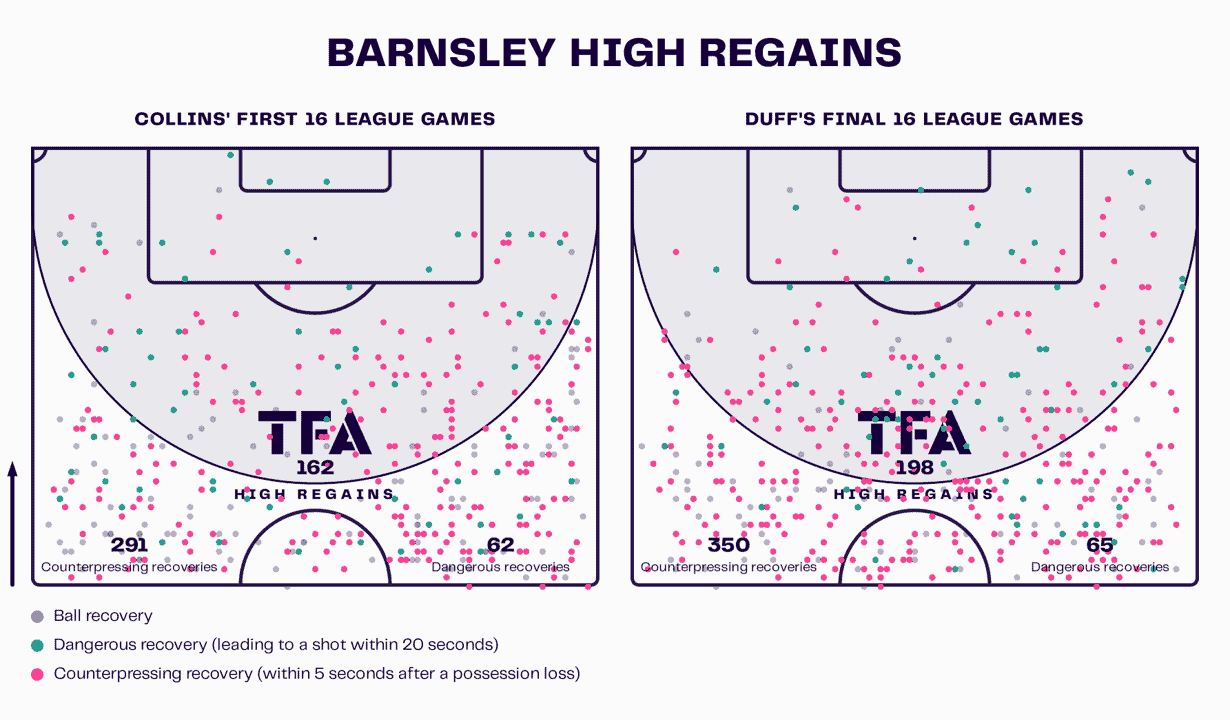
This analysis visual gives us a clearer idea of the change in approach off the ball under Collins. As you can see, his side have made over 30 fewer high regains than Duff’s side in the former gaffer’s final 16 games. At the same time, the Tykes also make considerably fewer counterpressing recoveries under Collins. Interestingly, their rate of making dangerous recoveries remains at a similar level this season – again, this trait falls into their approach of utilising attacking transitions.
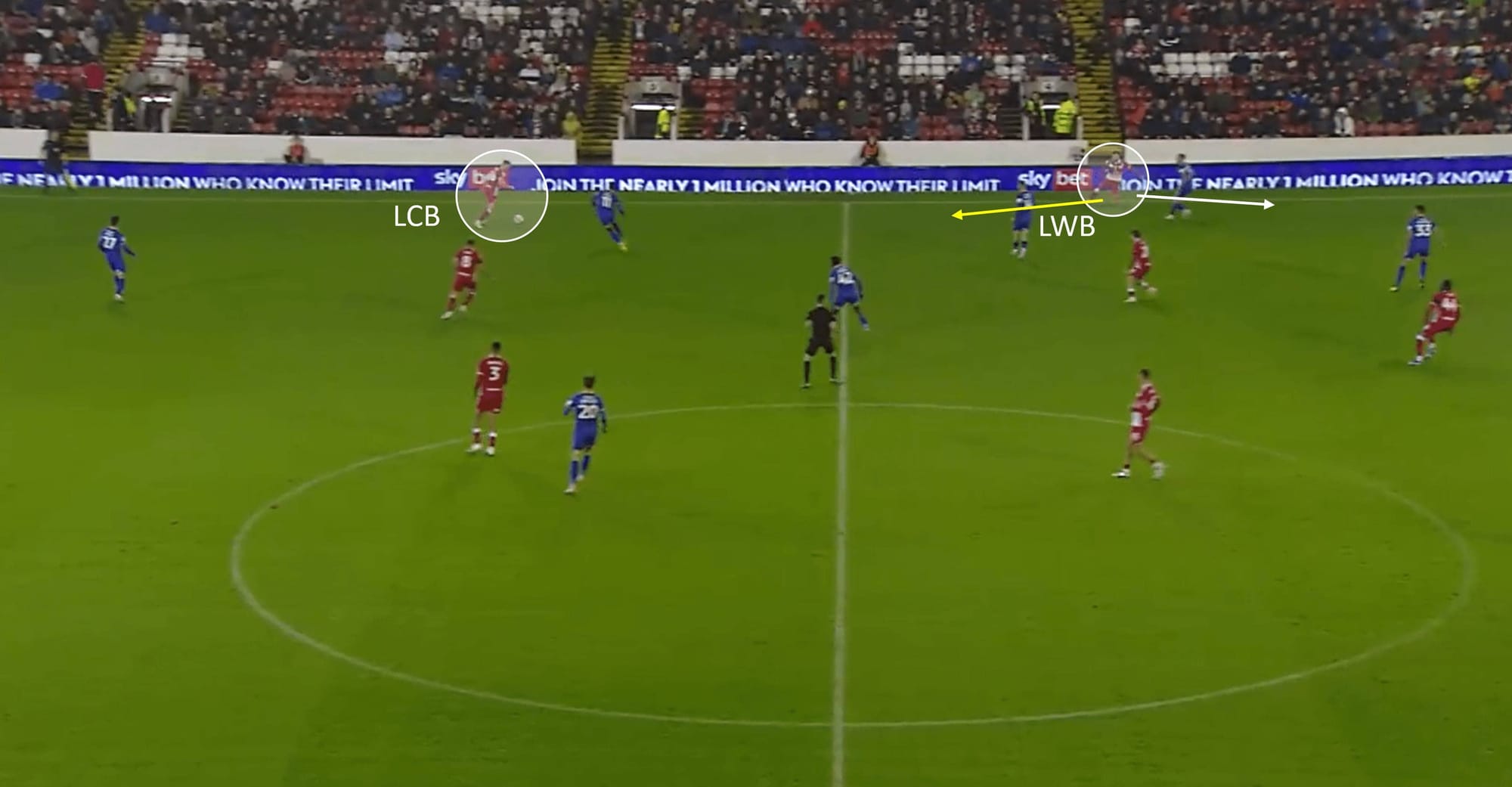
Moving on to their approach in possession, we see the inclusion of a popular modern tactic – the use of a wide centre-back. The 3-5-2 formation allows your team to play with great width and balance within the team shape, making it an excellent system to deploy the wide CB role. One of the responsibilities of this role in Collins’ setup is to support possession from a position that allows them to link up with the wing-back on their side, similar to how a left-back and left-winger would in four-at-the-back shapes.
Players in this role need good technical attributes – competent on the ball while also possessing the necessary physical and mental attributes to react in a defensive situation. On the ball, Barnsley’s wide CBs will look for a lofted long ball into the channel for the running wing-back – alternatively, the wing-back will drop deeper to provide a short passing option, in turn bringing Barnsley’s midfield into play sooner.
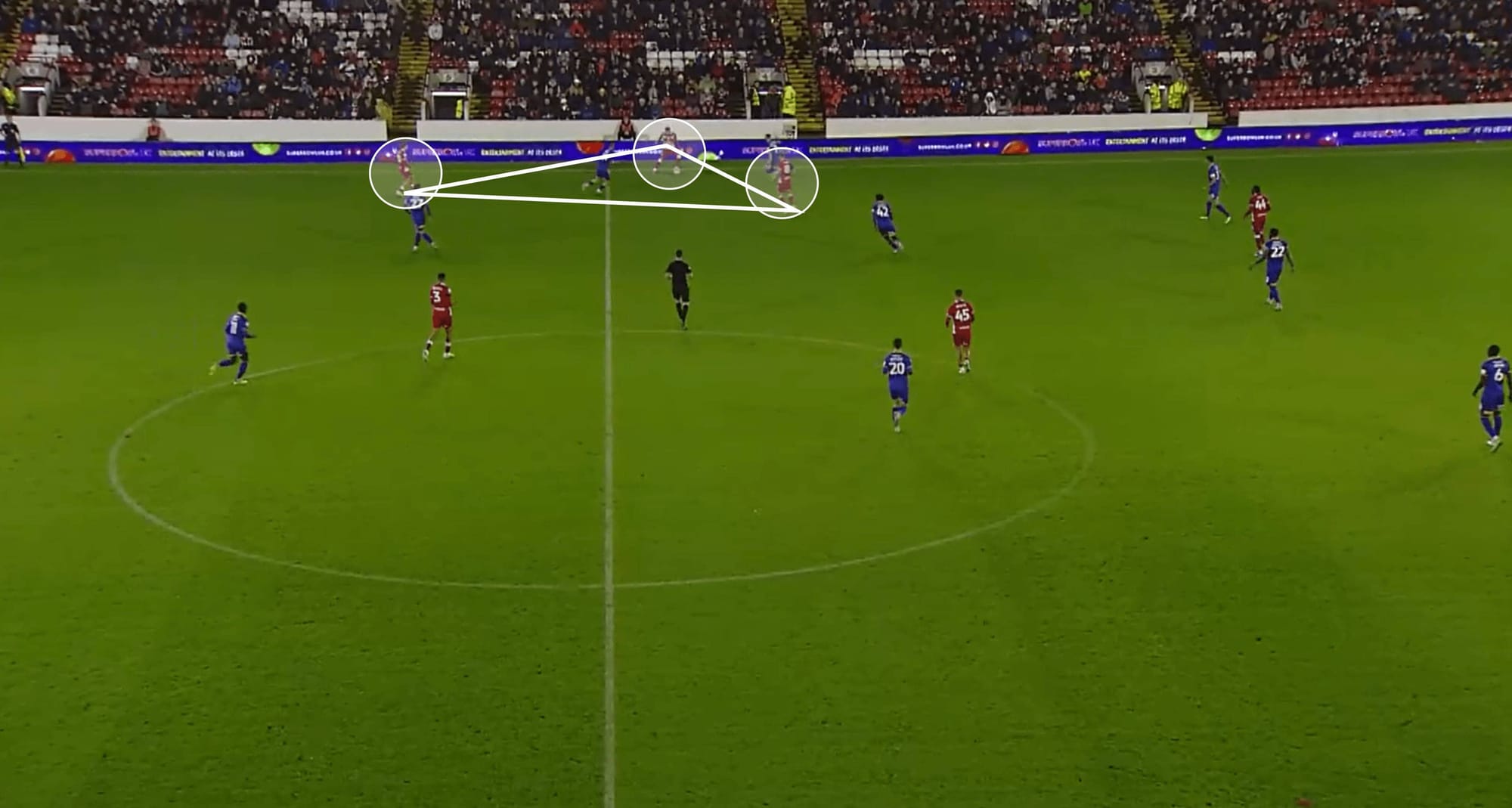
This season, possession in wide areas is an important factor of Barnsley’s tactics, often involving the wide CB, wing-back, and close midfielders. Not only does it allow them to perform short passing combinations to retain possession, but it can drag the opposition midfield out of position, therefore opening up space for Barnsley to exploit, often through the opposite flank.
This season, Barnsley have looked to move the ball quickly but without being vintage route one, which is why they have the joint-highest passing rate in League One with 15 passes per minute of possession. Last season’s rate was 12.8, so Collins has done some good work in a short amount of time to get his team playing in such a way.

The image above shows us an example of that. After holding possession in a tight space on the left side, Cambridge’s midfield unit were sucked into that space, making central spaces open, as well as the right flank – often, Collins’ Barnsley will work the ball out to that open opposite flank, sometimes via a pass from a central player.
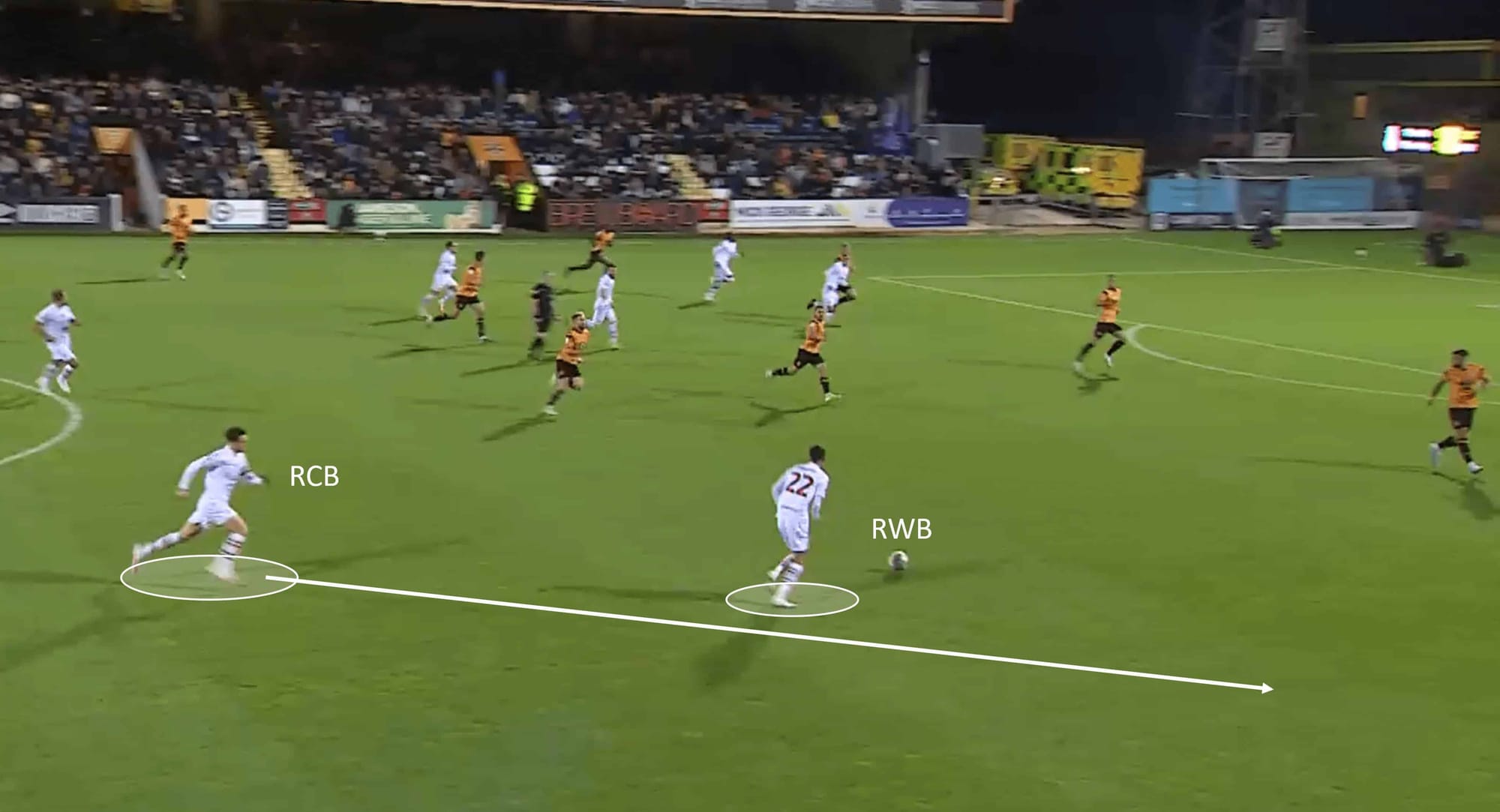
These moments show us some real tactical identity as the wing-back collecting the ball is supported by the arriving wide CB, who sometimes even makes an overlapping run into a more advanced position. These runs are sometimes used as a decoy; however, with the RWB looking to take a quicker route to the box than slowing the move down out wide – attacking with pace is a staple of Barnsley’s attack and is one of the main reasons they’ve been so prolific in front of goal.
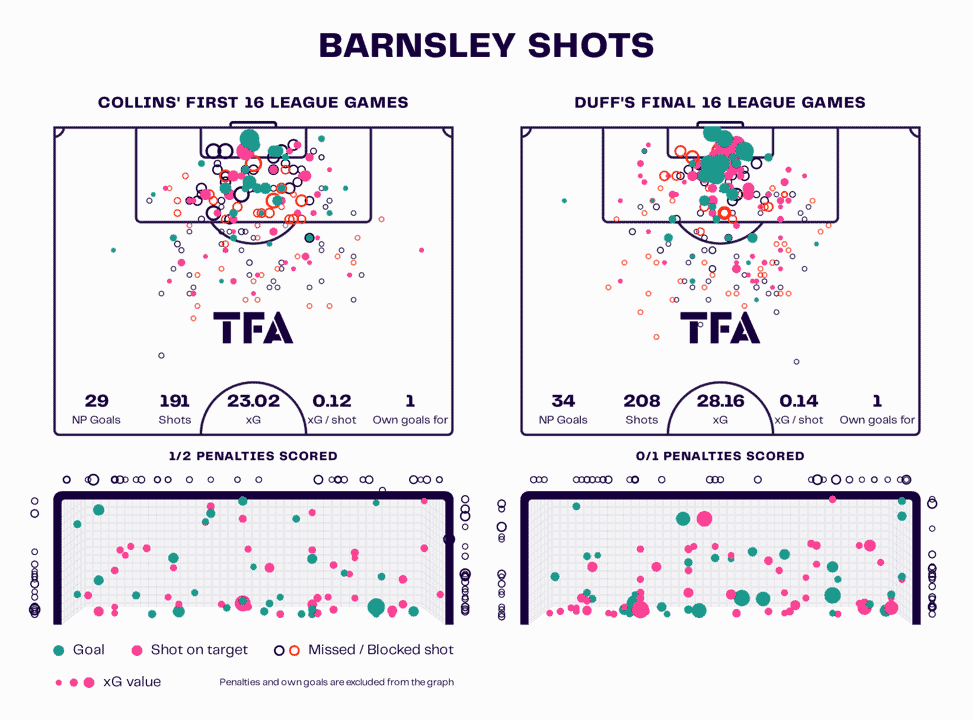
Here, we can take a closer look at just how prolific they have been under both Collins and Duff. We mentioned earlier that Collins has improved the performance of Barnsley in several areas, and has, not in front of goal – not compared to how Barnsley closed out last season anyway (although Collins’ Tykes after 16 games have a better average than Duff’s side over the whole of last season in terms of xG per 90, shots per 90, and goals per 90.).
Barnsley’s home stretch last season saw them hit some form of inconsistency – in some games, they’d smash five goals in, and in seven of those final 16 games, they scored under two goals. But those games where they’d turn on the style resulted in some impressive stats that you see above, and that is why it is important not to disregard Collins’ attacking output – while his stats in the opening 16 games are lower than Duff’s final 16, Barnsley still clearly have a real attacking threat that many teams struggle to cope with. Opening the season with a 7-0 win over Port Vale gave us a warning of this (sorry, Port Vale fans!).
Something that Duff really leaned into was Barnsley’s aerial threat in attack – scoring 19 headers last season: the highest in League One. Neill Collins has opted to include that element in his tactics, with his side scoring seven headers already – the second-highest tally in the division.
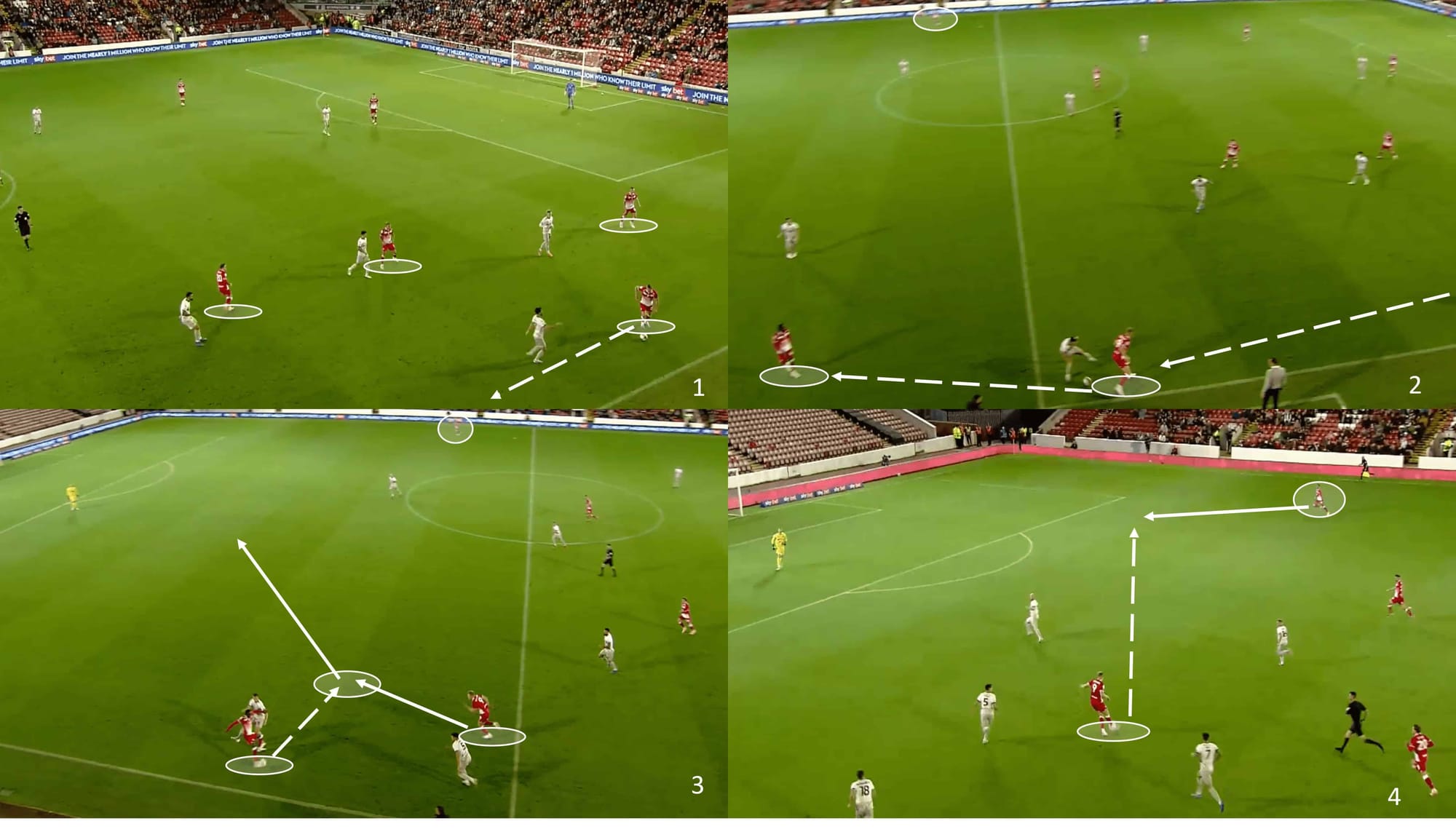
Earlier, we spoke of Barnsley’s preference to attack with pace. Well, here, we break down a move that not only ticks that box but also incorporates another tactical element we’ve discussed – using passing combinations in wide areas to create and later exploit space elsewhere on the pitch.
The positioning of the supporting players in image one is vital as it encouraged the opposition to push high into the Barnsley half. At that moment, there are six opposition shirts in the Tykes’ half, leaving them quite thin in deeper areas in midfield. The Barnsley LWB on the night was able to quickly fire a pass into Cosgrove, and these key moments are where the big man’s physicality comes in clutch as he keeps the opponents away from the ball, allowing him to make a first-time backheel flick into Devante Cole who offered a wide supporting position.
Some great determination and awareness from Cosgrove saw the forward follow his clever pass up with a bursting run into the central space created by both his and Cole’s wide presence, and he took the return pass well enough to carry his side into the final third at pace. Notice, for a moment, the highlighted right-sided player at the top of images two and three. His width and, by extension, Barnsley’s width gave the opponent a real defensive headache. That width paid dividends as Cosgrove found the pass, and the arriving player smashed the ball into the net.
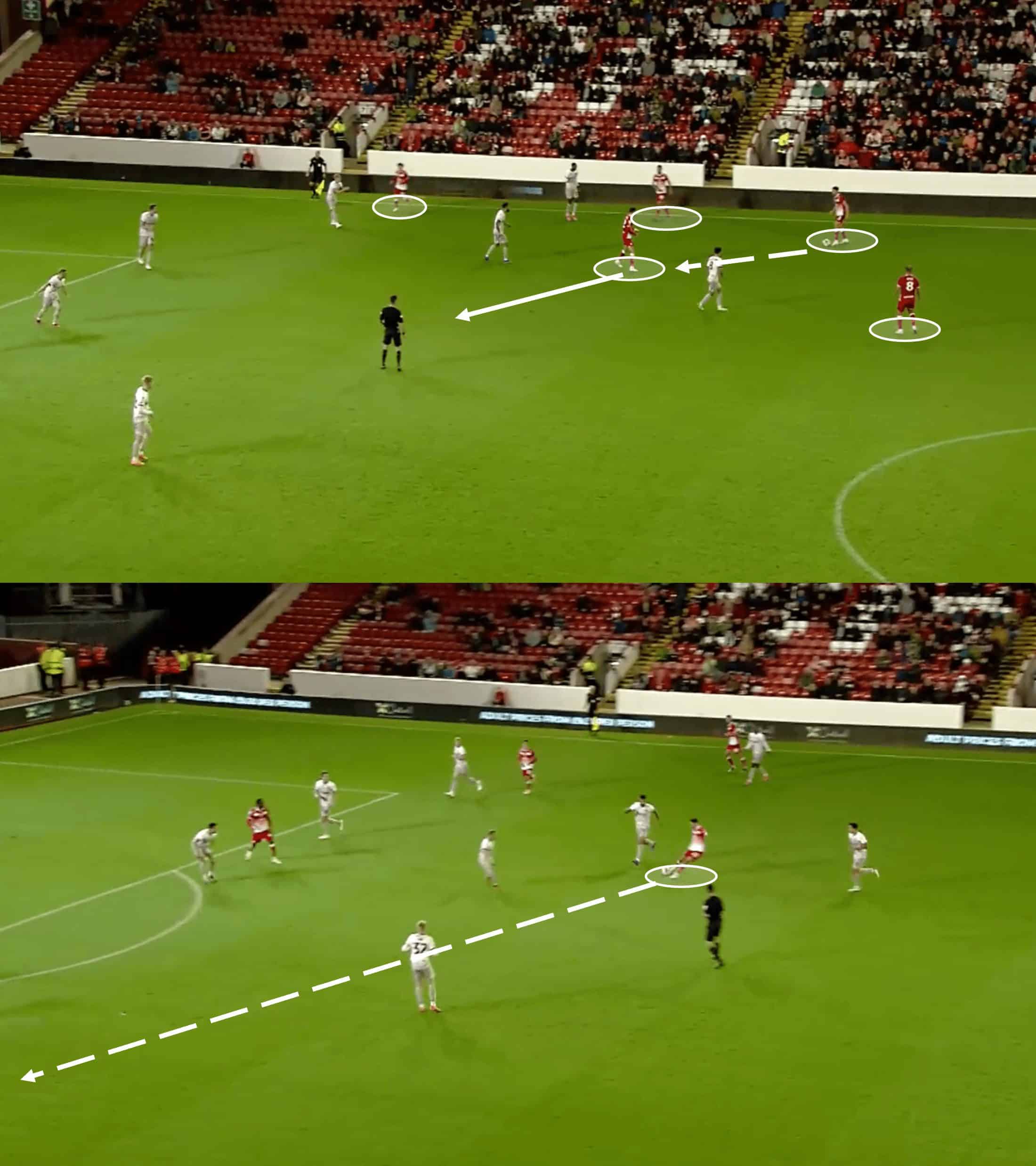
As you can see above, Barnsley have adapted to utilise their weapon of wide possession even in higher areas of the pitch. It’s almost a carbon copy of the Cambridge example in terms of having an increased presence on one side, moving the ball into a slightly more central option, and shifting the ball quickly out to the opposite flank – indicating that the players are really buying into Collins’ ideologies.
This move continued after the trademark pattern, ending with a cross met by a bullet header. Crossing is something that Collins has so far leaned into more than Duff did. Duff’s side averaged 14.93 crosses per 90 last campaign, with the Tykes now attempting 17.47 per 90 under Collins – and why wouldn’t you want your team to put their foot on the pedal when they’re such an aerial threat?
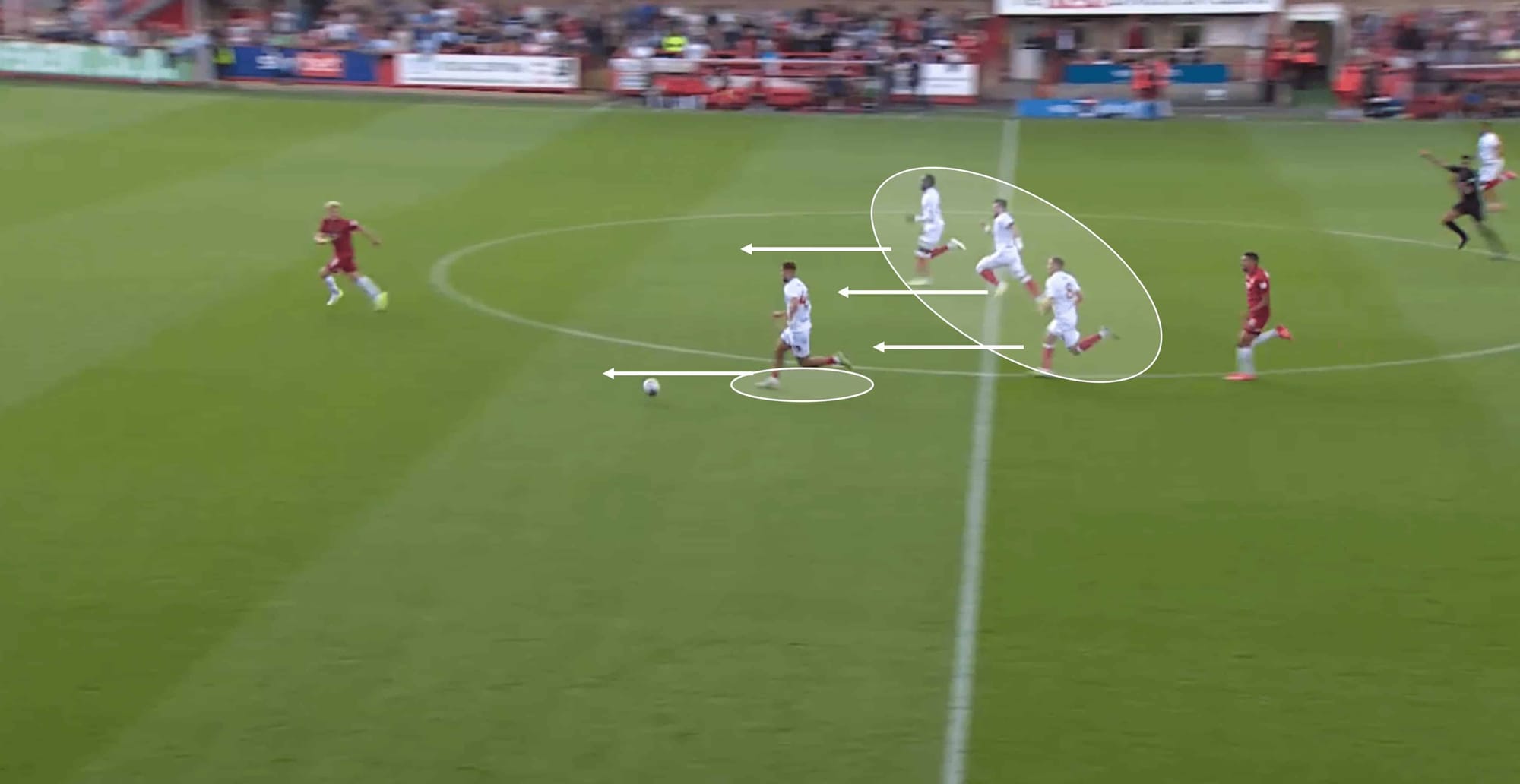
As we mentioned earlier, Barnsley love hurting teams in attacking transitions. The image above shows us a pure counterattack following an unsuccessful opposition corner. Still, it is worth mentioning as multiple occasions mirror what is happening in this example. Not only is the man on the ball bursting forward out from his own half as soon as half a chance arises but there is often aggressive attacking support from at least two teammates, constantly creating a numerical advantage in a dangerous break. Collins’ side averaged 2.21 counterattacks per 90, which is almost double the 1.2 average from last season.
There are elements of this that Barnsley take into less obvious attacking transitions in terms of the speed at which they look to move forward. Those attacks, however, require more intricate off-the-ball movements and often involve facing a higher defensive presence from the opposition.
Conclusion
This is Neill Collins’ second managerial role and his first in England, so he deserves credit for maintaining the momentum and attacking threat from last season – many teams who suffer a play-off defeat struggle to hit the ground running the season after. While the former Tampa Bay Rowdies coach shares some similarities to Duff’s tactics last season, he has added his own philosophy into the tactics, which has seen the Tykes have improved numbers in the areas we’ve mentioned already, as well as other areas like possession, forward passes, passes to the final third, and progressive passes – all in terms of both engagement and success rates.
A promising start for Collins, who played over 500 professional games as a towering central defender, but he knows there is still work to be done. Barnsley fans expect to be in the Championship, and if Collins can fine-tune certain tactical aspects and tighten up defensively, they stand a real chance of earning that promotion.

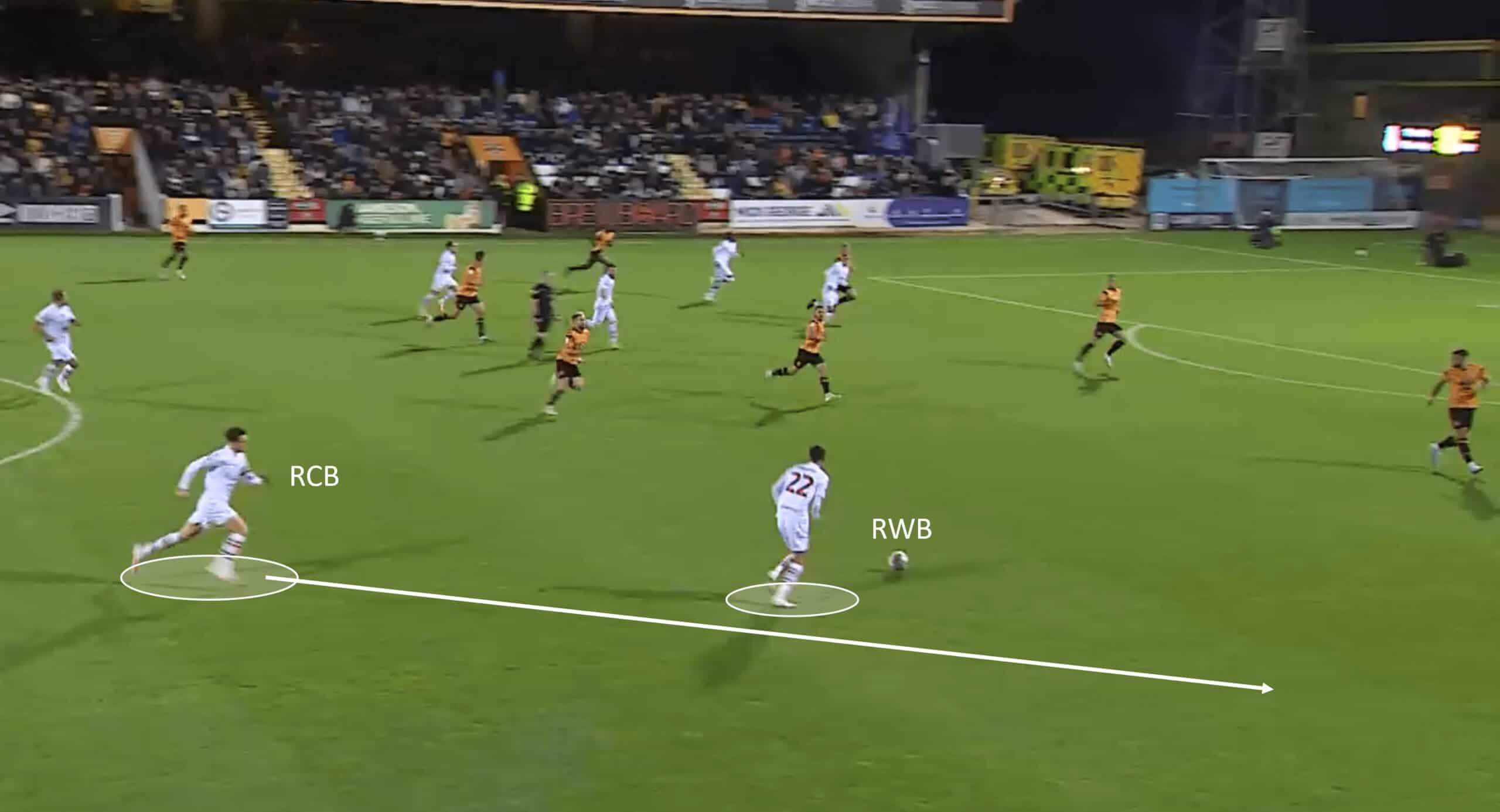




Comments